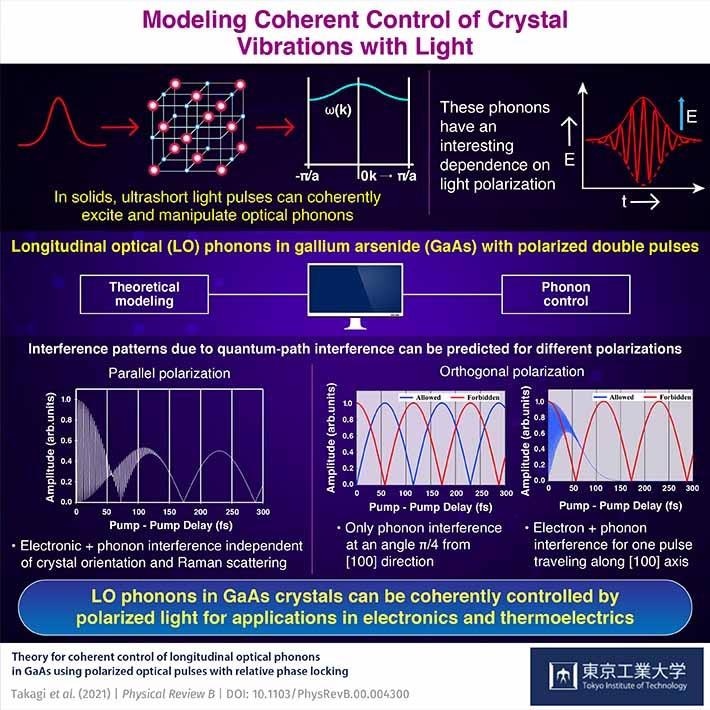Materials scientists from Tokyo Tech state that the quantum behavior of atomic vibrations stimulated in a crystal using light pulses has a lot to do with the pulse polarization. The conclusions from their recent study provide a new control parameter for the exploitation of coherently stimulated vibrations in solid materials at the quantum level.

Image Credit: Tokyo Institute of Technology
Solids may seem perfectly still when viewed with the naked eye, but in fact, their constituent molecules and atoms are definitely not. They vibrate and rotate, respectively signifying the so-called "vibrational" and "rotational" energy states of the system.
As these atoms and molecules follow the laws of quantum physics, their rotation and vibration are, actually, discretized, with a distinct "quantum" thought to be the smallest unit of such motion. For example, the quantum of atomic vibration is a particle known as "phonon."
Atomic vibrations, and thus phonons, can be produced in a solid by shining light on it. A typical way to perform this is by employing "ultrashort" light pulses (pulses that measure tens to hundreds of femtoseconds long) to stimulate and exploit phonons. This method is called "coherent control."
While the phonons are typically controlled by altering the relative phase between consecutive optical pulses, studies have exposed that light polarization can also impact the behavior of these "optical phonons."
Dr. Kazutaka Nakamura's team at Tokyo Institute of Technology (Tokyo Tech) examined the coherent control of longitudinal optical (LO) phonons (i.e., phonons analogous to longitudinal vibrations stimulated by light) on the surface of a gallium arsenide single crystal and witnessed a "quantum interference" for both electrons and phonons for parallel polarization while just one phonon interference for equally perpendicular polarization.
We developed a quantum mechanical model with classical light fields for the coherent control of the LO phonon amplitude and applied this to GaAs and diamond crystals. However, we did not study the effects of polarization correlation between the light pulses in sufficient detail.
Dr. Kazutaka Nakamura, Associate Professor, Tokyo Tech
As a result, his team concentrated on this characteristic in a new study published in Physical Review Bouter. They demonstrated the generation of LO phonons in GaAs with two relative phase-locked pulses with the help of a basic band model and "Raman scattering," the phenomenon behind the phonon production, and measures the phonon amplitudes for various polarization settings.
Their model estimated both phonon and electron interference for parallel-polarized pulses as anticipated, with no reliance on crystal orientation or the intensity ratio for forbidden and allowed Raman scattering.
The model only estimated phonon interference for perpendicularly polarized pulses at an angle of 45° from the [100] crystal direction. But, when one of the pulses was channeled along [100], electron interference was stimulated by allowed Raman scattering.
With these insights, the researchers anticipate improved coherent control of optical phonons in crystals.
Our study demonstrates that polarization plays quite an important role in the excitation and detection of coherent phonons and would be especially relevant for materials with asymmetric interaction modes, such as bismuth, which has more than two optical phonon modes and electronic states. Our findings are thus extendable to other materials.
Dr. Kazutaka Nakamura, Associate Professor, Tokyo Tech
Certainly, light has its means of getting materials as well as material scientists excited.
Journal Reference:
Takagi, I., et al. (2021) Theory for coherent control of longitudinal optical phonons in GaAs using polarized optical pulses with relative phase locking. Physical Review B. doi.org/10.1103/PhysRevB.104.134301.